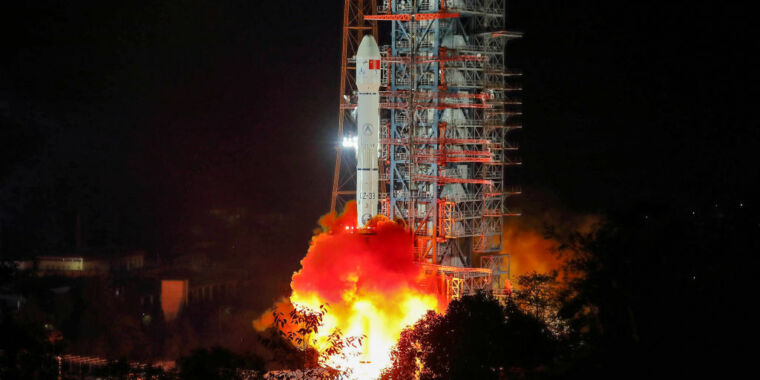China suffers its second launch failure in less than a month
STR/AFP via Getty Images
The Long March 3B rocket is one of China's oldest active and most reliable boosters, with more than five dozen successful launches. On Thursday, however, the rocket failed when it attempted to launch an Indonesian telecommunications satellite, Nusantara Dua, from the Xichang Satellite Launch Center.
Although ground-based observations showed the first and second stages of the rocket performing nominally, apparently something went wrong with the final stage needed for a boost into geostationary transfer orbit. Chinese media are reporting the third stage failed due to unspecified reasons, and the 5.5-ton satellite fell back into Earth's atmosphere.
This is China's second failure in eight launch attempts this year, and the second in less than a month. On March 16, the launch of the relatively new Long March 7A failed to reach orbit after lifting off from Wenchang Spacecraft Launch Site.
It is not clear what effect these two high-profile failures will have on China's launch industry, which had planned to conduct more than 40 launch attempts this year, including a highly anticipated Mars mission in July. This HX-1 spacecraft is slated to fly on the country's most powerful booster, the Long March 5. That rocket has launched just three times, with two successes.
Indosat's Nusantara Dua was planned as a replacement for another telecommunications satellite in geostationary orbit, Palapa-D.
Ironically, that satellite also launched on a Long March 3B rocket, back in 2009, and that booster also had a problem with its third stage. In the case of the 2009 launch, the problem was not catastrophic, as only one of the upper-stage's two engines failed to work properly. The satellite was able to use its on-board thrusters and propellent to raise its orbit and eventually reach geostationary space.
Because of the fuel expended during this orbit-raising process, however, the Palapa-D satellite's design lifetime was reduced from 15 to 10 years, necessitating Thursday's launch of Nusantara Dua.
One other rocket launch was attempted on Thursday—a Russian Soyuz vehicle carrying NASA astronaut Chris Cassidy and his two Russian crew mates, Anatoly Ivanishin and Ivan Vagner. Happily, that launch was a success, and the three astronauts are now safely docked to the International Space Station.








Gloss